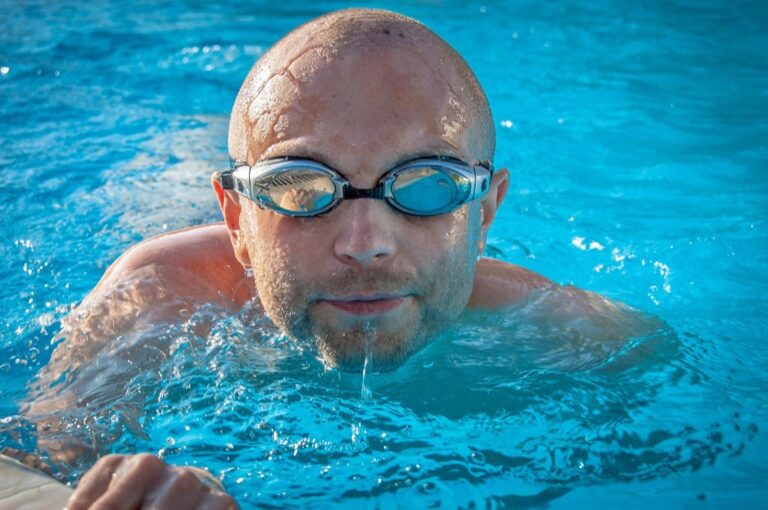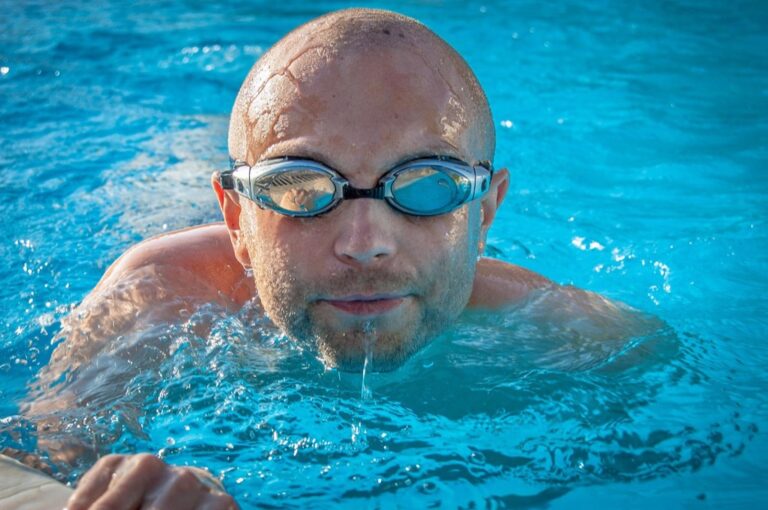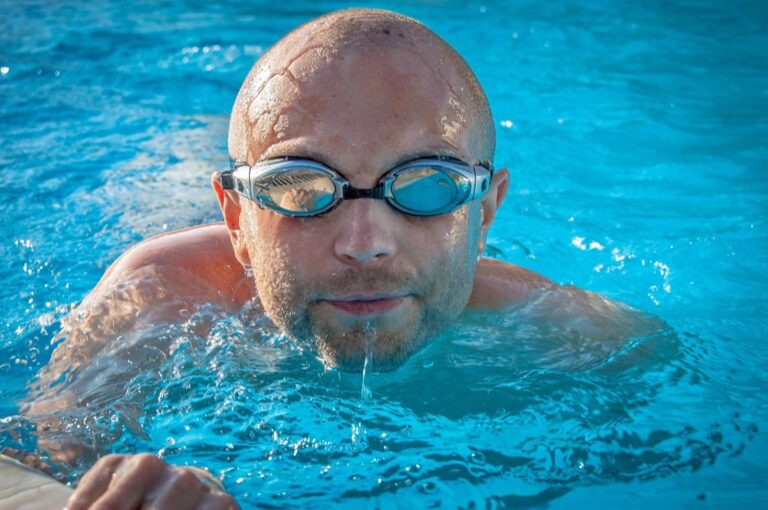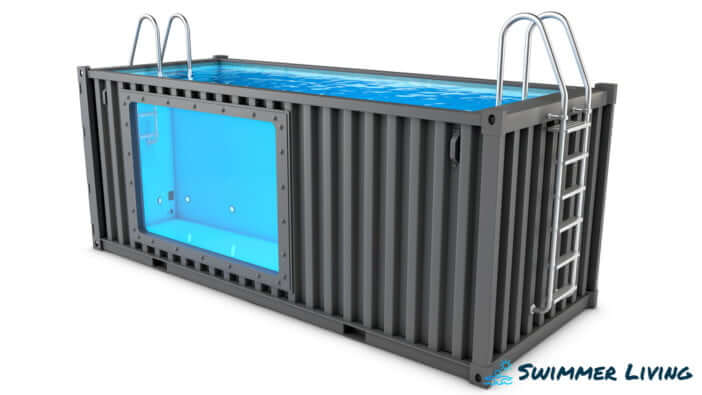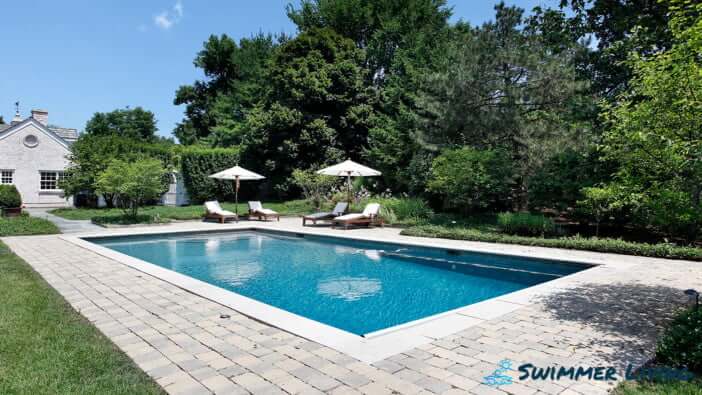7 Pros and Cons of Above Ground vs Inground Pools That Every Parent Should Know
Choosing between above ground vs inground pools? Compare costs, installation time, durability & property value. 7 key pros and cons to help you decide.
The big picture: You’re dreaming of backyard pool life but can’t decide between above ground and inground options – and the choice will impact your wallet your property value and your summer plans for years to come.
Why it matters: Above ground pools offer quick installation and lower upfront costs while inground pools provide permanent value and unlimited design possibilities but each comes with distinct trade-offs you’ll need to consider.
What’s ahead: We’ll break down seven key pros and cons to help you make the smartest decision for your budget timeline and long-term goals.
Disclosure: As an Amazon Associate, this site earns from qualifying purchases. Thank you!
Understanding the Basics: Above Ground vs Inground Pools
The fundamental difference between these pool types lies in their installation method and structural design. Above ground pools sit on your yard’s surface, while inground pools are excavated into the ground.
What Are Above Ground Pools?
Above ground pools feature walls that extend above your yard’s surface, supported by external frames or self-supporting structures. You’ll find them in steel, aluminum, or resin materials, with vinyl liners containing the water. These pools typically range from 12 to 33 feet in diameter with depths between 48 to 54 inches.
Protect your shelves and drawers with these BPA-free EVA liners. They're easy to cut, clean, and waterproof, making them ideal for keeping your kitchen and refrigerator organized and fresh.
What Are Inground Pools?
Inground pools are excavated into your property and built with concrete, fiberglass, or vinyl liner construction. They’re permanently installed below ground level and can be customized to virtually any shape, size, or depth. You’ll have complete design freedom for depths ranging from 3 to 12 feet or more.
Key Differences at a Glance
| Feature | Above Ground | Inground |
|---|---|---|
| Installation time | 1-3 days | 3-12 weeks |
| Average cost | $3,000-$15,000 | $35,000-$100,000+ |
| Lifespan | 7-15 years | 25+ years |
| Property value impact | Minimal | 5-8% increase |
Pro #1: Cost Considerations Favor Above Ground Pools
Above ground pools deliver immediate savings that make backyard swimming accessible to most homeowners. The upfront cost difference alone can determine whether you’re swimming this summer or waiting years to save up.
Initial Purchase and Installation Costs
You’ll spend $3,000-$15,000 for a complete above ground pool setup versus $35,000-$100,000+ for inground installation. Installation takes 1-3 days compared to 3-12 weeks for excavation and construction. Your total investment stays under $20,000 even with premium decking and accessories.
Long-Term Financial Impact
Above ground pools require minimal ongoing maintenance costs and don’t trigger property tax increases like inground installations. You’ll save $2,000-$5,000 annually on utilities, chemicals, and professional servicing. When replacement time comes in 10-15 years, you’re not locked into expensive renovations.
Con #1: Above Ground Pools Offer Limited Aesthetic Appeal
Above ground pools create an obvious visual disruption in your backyard landscape. Their protruding walls and utilitarian appearance rarely complement your home’s architectural style or existing outdoor design elements.
Visual Impact on Property
Above ground pools dominate your yard’s sight lines with their prominent walls and supporting framework. The circular or oval structures typically rise 48-54 inches above ground level, creating an industrial appearance that interrupts natural landscaping flow. Your property’s visual balance suffers when these pools become the focal point rather than blending seamlessly with outdoor living spaces.
Design and Customization Restrictions
Above ground pools offer minimal customization options compared to their inground counterparts. You’re limited to standard shapes like round, oval, or rectangular configurations with predetermined sizes ranging from 12 to 33 feet. Deck integration remains challenging due to structural limitations, and surrounding landscaping options become restricted by the pool’s fixed height and access requirements.
Pro #2: Installation Speed Benefits Above Ground Options
Above ground pools deliver immediate gratification with remarkably fast installation timelines. You’ll be swimming within days instead of waiting months for construction completion.
Quick Setup Process
Professional installation crews complete most above ground pool setups in 1-3 days. Your pool frame assembles quickly with modular components that snap together efficiently. The liner installation and water filling process happens on the final day, letting you enjoy your new pool by the weekend.
Minimal Site Preparation Required
You’ll need only basic ground leveling and grass removal for proper installation. The site preparation involves clearing a level area and adding sand for the pool base. No excavation, concrete pouring, or complex utilities work delays your swimming season like inground installations require.
Con #2: Inground Pools Provide Superior Durability
While above ground pools offer immediate cost savings, their construction materials simply can’t match the longevity of inground installations. This durability gap becomes a significant factor when you’re planning for long-term pool ownership.
Material Quality and Longevity
Inground pools use reinforced concrete, fiberglass, or commercial-grade vinyl that’s built to last decades. Above ground pools rely on thinner steel walls, aluminum frames, or resin components that typically need replacement every 7-15 years. You’ll find inground pool materials withstand structural stress and daily use far better than their above ground counterparts.
Weather Resistance Comparison
Concrete and fiberglass inground pools handle freeze-thaw cycles, heavy snow loads, and extreme temperatures without structural damage. Above ground pools face constant exposure to UV rays, wind stress, and temperature fluctuations that weaken their walls and liner systems. Your inground pool will maintain its structural integrity through harsh winters that could buckle above ground pool walls.
Pro #3: Above Ground Pools Offer Greater Flexibility
Above ground pools give you the freedom to adapt your swimming setup to changing needs and circumstances. Unlike permanent inground installations, these pools work with your lifestyle instead of dictating it.
Portability Advantages
You can disassemble and relocate your above ground pool when you move homes or redesign your yard. The modular components pack flat for transport and reassemble at your new location. This portability protects your investment and gives you swimming options wherever you go, making these pools ideal for renters or homeowners planning future relocations.
Seasonal Use Options
You can fully winterize and store your above ground pool during harsh winter months, extending its lifespan significantly. Complete disassembly protects the structure from freeze damage and harsh weather conditions. This seasonal flexibility also lets you reclaim your entire backyard space for winter activities like skating rinks or holiday gatherings.
Con #3: Property Value Impact Differs Significantly
Pool choices create vastly different impacts on your home’s market value. This difference can influence your long-term financial planning and resale strategy.
Inground Pools Increase Home Value
Inground pools boost property values by 5-8% in most markets, adding $20,000-$40,000 to typical home prices. Real estate appraisers classify them as permanent improvements that enhance overall property appeal. You’ll see the strongest returns in warm climates like Arizona, Florida, and Southern California where pools remain functional year-round.
Above Ground Pools Provide Minimal ROI
Above ground pools add virtually no resale value to your property. Buyers often view them as temporary fixtures requiring eventual removal and disposal costs. You’ll recover less than 10% of your initial investment when selling, since most purchasers prefer the yard space for other uses or plan inground installation.
Pro #4: Maintenance Requirements Vary by Pool Type
Pool maintenance complexity differs significantly between above ground and inground pools. Your maintenance routine will adapt to each pool type’s unique structural characteristics and accessibility challenges.
Cleaning and Chemical Balance
Above ground pools simplify your cleaning routine with easier water testing and chemical distribution throughout the smaller water volume. You’ll spend less time balancing pH levels and chlorine in these pools since their compact size allows chemicals to circulate more effectively.
Keep your pool water clean and clear with Clorox Pool&Spa XTRABLUE 3" Chlorinating Tablets. These tablets kill bacteria, prevent algae, and contain conditioners for silky smooth water.
Inground pools require more sophisticated maintenance systems including automatic cleaners and multiple skimmer baskets to manage larger debris loads. Your chemical costs will increase with these pools’ greater water capacity and complex filtration requirements.
Keep your toilet clean and fresh with Vacplus Toilet Bowl Cleaner Tablets. Each tablet continuously cleans for up to 15 days, preventing dirt buildup in the tank and water pipes. Simply drop a tablet into the tank – no tearing required!
Seasonal Care Differences
Above ground pools offer complete winterization flexibility – you can drain them entirely and disassemble components for indoor storage during harsh winter months. This seasonal storage approach extends your pool’s lifespan and eliminates freeze damage concerns.
Inground pools demand year-round monitoring even when covered since you can’t drain them completely without risking structural damage from ground pressure. Your winter maintenance includes regular water level checks and equipment protection measures.
Pro #5: Safety Features and Accessibility Considerations
Safety features create distinct advantages for different pool types depending on your family’s specific needs. Understanding these differences helps you choose the option that best protects your loved ones.
Built-in Safety Advantages of Inground Pools
Inground pools offer superior drowning prevention through their natural barrier design. You’ll find that the pool deck creates a clear visual boundary that helps supervise children more effectively than elevated structures.
Professional safety equipment integrates seamlessly with inground installations. Pool covers, automatic safety systems, and fence installations work more reliably when anchored to concrete decking rather than temporary above ground structures.
Keep your rectangular Intex pool clean and protected with this durable cover. Designed for 103" x 69" or 120" x 72" pools, it helps prevent debris from entering the water.
Above Ground Pool Safety Measures
Above ground pools provide inherent access control through their elevated design. You can easily remove or secure ladders to prevent unsupervised entry, creating an immediate physical barrier that’s especially effective for households with young children.
Emergency exit becomes more challenging from above ground pools due to their height. Consider installing permanent deck access with proper railings to ensure safe entry and exit during both recreational use and emergency situations.
Pro #6: Swimming Experience Quality Comparison
The actual swimming experience differs dramatically between above ground and inground pools, with each offering distinct advantages that cater to different recreational needs.
Depth and Space Advantages
Inground pools deliver superior swimming experiences through their customizable depths of 3-8 feet, allowing for proper diving, lap swimming, and water sports. You’ll find that above ground pools typically max out at 4-5 feet deep, limiting your activities to basic swimming and floating. The expanded space in inground pools accommodates multiple swimmers comfortably, while above ground pools often feel cramped with more than 2-3 people.
Recreational Activity Options
Inground pools support a full range of water activities including diving, water volleyball, pool basketball, and competitive swimming due to their depth flexibility and space. You can install permanent features like diving boards, slides, and swim-up bars that enhance entertainment value. Above ground pools work best for casual swimming, water aerobics, and children’s play, but their height restrictions eliminate diving and limit competitive activities to simple games.
Enjoy comfortable play with the Wilson AVP Soft Play Volleyball. Its sponge-backed cover provides a soft touch, while durable construction and a butyl rubber bladder ensure lasting performance.
Pro #7: Climate and Weather Resistance Factors
Above ground pools offer distinct weather advantages that make them ideal for challenging climates where seasonal extremes can damage permanent installations.
Winter Protection Methods
Above ground pools excel in harsh winter conditions because you can completely drain and disassemble them. This eliminates freeze damage risks that plague inground pools, where trapped water can crack concrete or damage plumbing systems.
You’ll protect your investment by storing components indoors during winter months. This prevents UV degradation and weather exposure that shortens pool lifespans in regions with extreme temperature swings.
Seasonal Durability Issues
Inground pools face significant structural challenges during freeze-thaw cycles that can crack concrete shells and damage tile work. Above ground pools avoid these issues entirely through seasonal removal capabilities.
Your pool walls won’t suffer from ground movement or frost heave damage that affects permanent installations. This weather flexibility extends equipment life and reduces costly repairs common with fixed pool systems.
Conclusion
Choosing between above ground and inground pools ultimately depends on your specific priorities and circumstances. If you’re looking for immediate pool enjoyment on a limited budget above ground pools offer the perfect solution with their quick installation and lower costs. They’re also ideal if you value flexibility and may relocate in the future.
However if you’re focused on long-term property investment and want a premium swimming experience inground pools deliver superior value. Their durability aesthetic appeal and positive impact on home resale value make them worthwhile for homeowners planning to stay put for years.
Consider your budget timeline and long-term goals when making this decision. Both options provide excellent opportunities for family fun and relaxation – it’s simply a matter of finding the right fit for your unique situation and backyard vision.
Frequently Asked Questions
What’s the main cost difference between above ground and inground pools?
Above ground pools cost $3,000-$15,000 with minimal ongoing expenses, while inground pools range from $35,000-$100,000+ with higher maintenance costs. Above ground pools don’t increase property taxes and save $2,000-$5,000 annually on utilities and servicing, making them significantly more budget-friendly for most homeowners.
How long does it take to install each type of pool?
Above ground pools can be installed in just 1-3 days with minimal site preparation, allowing you to start swimming almost immediately. Inground pools require 3-12 weeks of construction, involving extensive excavation, concrete work, and professional installation processes.
Which pool type lasts longer?
Inground pools last over 25 years due to reinforced concrete, fiberglass, or commercial-grade vinyl construction. Above ground pools typically need replacement every 7-15 years as their thinner materials are more susceptible to UV damage and temperature fluctuations.
Do pools increase home value?
Inground pools can increase property value by 5-8%, adding $20,000-$40,000 to home prices, especially in warm climates. Above ground pools provide minimal return on investment and add virtually no resale value since buyers view them as temporary fixtures.
Which pool requires less maintenance?
Above ground pools are easier to maintain due to smaller water volume, simpler chemical balancing, and the ability to drain completely for winter storage. Inground pools require more sophisticated systems, higher chemical costs, and year-round monitoring to prevent structural damage.
Can above ground pools be moved or relocated?
Yes, above ground pools offer excellent flexibility as they can be disassembled and relocated when moving homes or redesigning yards. This modularity protects your investment and makes them ideal for renters or those planning future relocations. Inground pools are permanent fixtures.
Which pool is better for swimming activities?
Inground pools provide superior depth (3-8 feet) and space for diving, water sports, and multiple swimmers. They can accommodate diving boards and slides. Above ground pools max out at 4-5 feet deep and are better suited for casual swimming, floating, and children’s play activities.
How do pools handle winter weather?
Above ground pools excel in harsh winter conditions since they can be drained and disassembled, avoiding freeze damage. Inground pools face structural challenges during freeze-thaw cycles and require year-round monitoring, potentially leading to costly repairs if not properly winterized.








